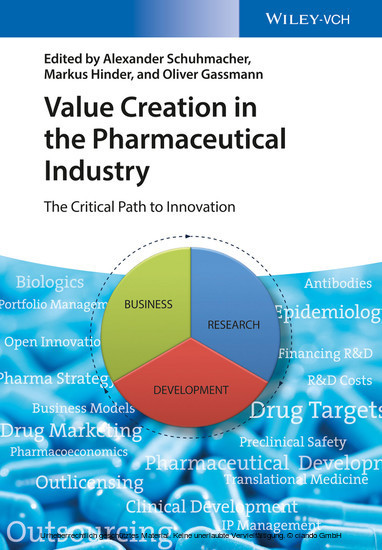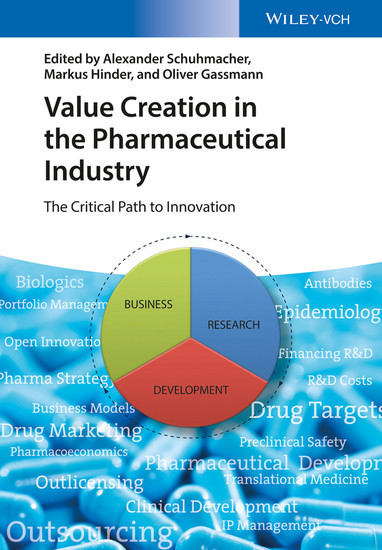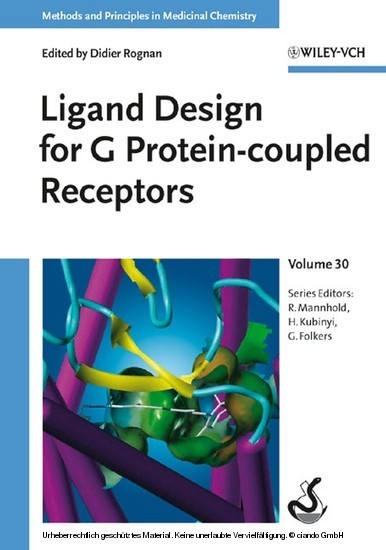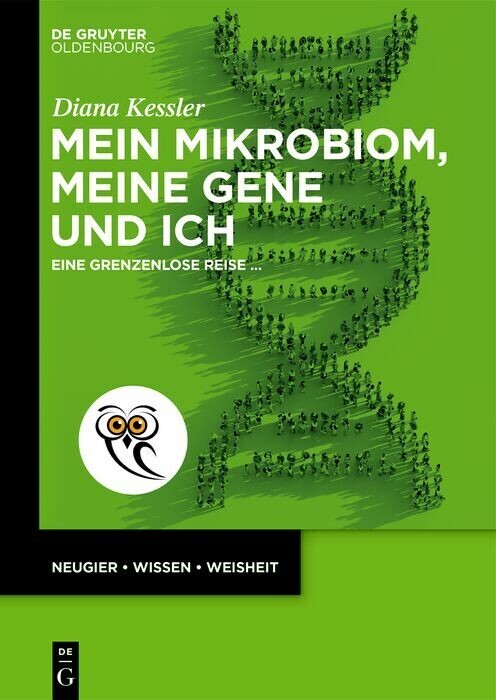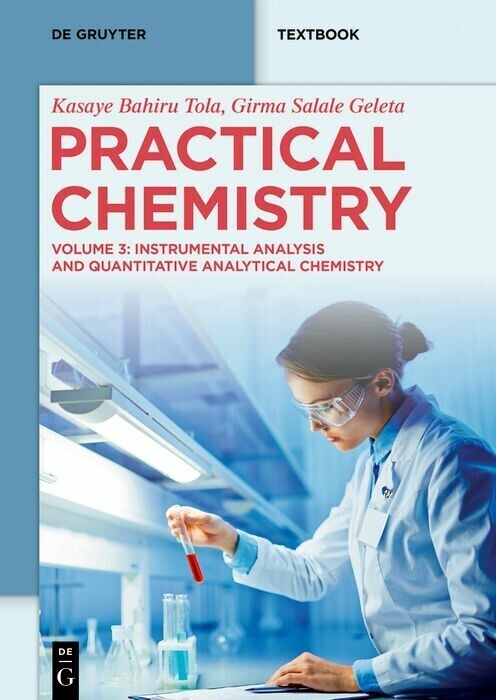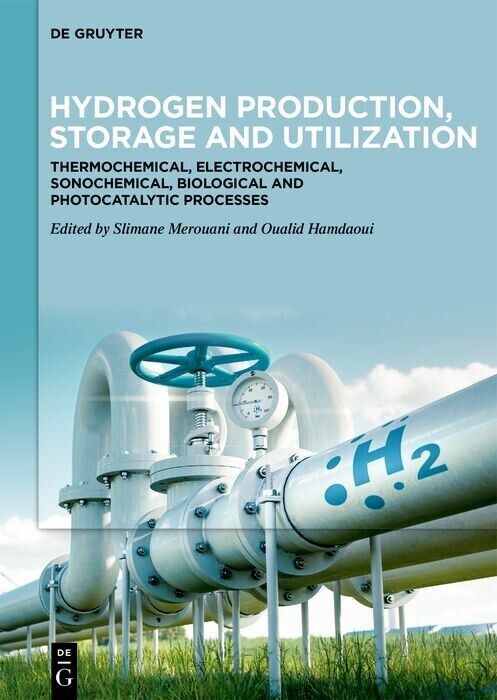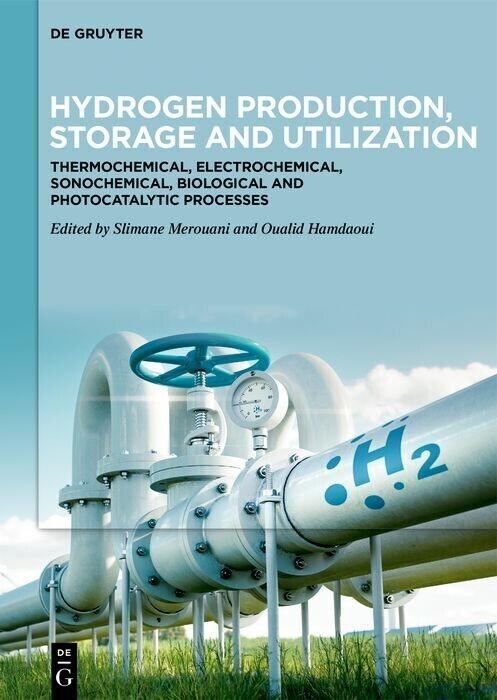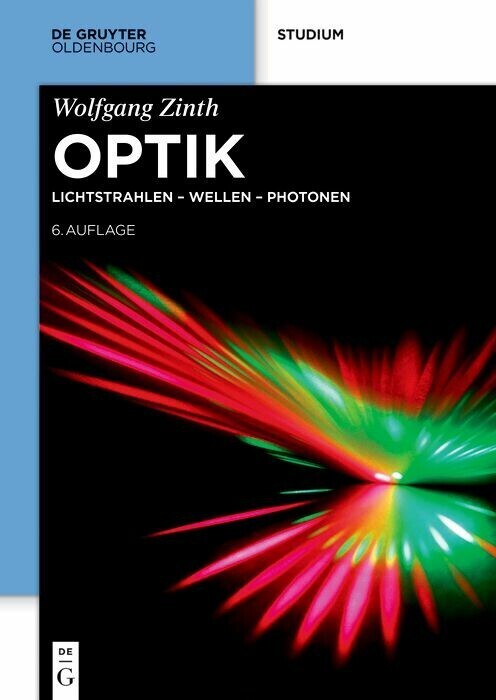Value Creation in the Pharmaceutical Industry
A team of editors and authors with extensive experience in academia and industry and at some of the most prestigious business schools in Europe discusses in detail the innovation process in pharma as well as common and new research and innovation strategies. In doing so, they cover collaboration and partnerships, open innovation, biopharmaceuticals, translational medicine, good manufacturing practice, regulatory affairs, and portfolio management. Each chapter covers controversial aspects of recent developments in the pharmaceutical industry, with the aim of stimulating productive debates on the most effective and efficient innovation processes.
A must-have for young professionals and MBA students preparing to enter R&D in pharma or biotech as well as for students on a combined BA/biomedical and natural sciences program.
Prof. Dr. Alexander Schuhmacher is a professor for R&D management, Vice Dean of the Faculty of Applied Chemistry and Senator at Reutlingen University. And he is Director for R&D performance metrics and business model innovation at Bioscience Valuation. Before joining the academic world, he worked 14 years in the pharmaceutical industry in various functions in R&D, such as in R&D portfolio management and strategic planning. He studied biology at the University of Constance (Germany), Pharmaceutical Medicine at Witten-Herdecke University (Germany) and he is also a graduate of the Executive MBA program at the University of St. Gallen (Switzerland).
Prof. Dr. Markus Hinder studied medicine at the Universities of Heidelberg, Paris and Zurich and obtained a doctoral degree in pharmacology from Heidelberg University. After graduation he trained in clinical pharmacology, cardiology and emergency medicine. Before joining Novartis he held leadership positions in clinical pharmacology, translational medicine, clinical development, medical affairs and project management. Markus is a professor at Cardiff University/ Hochschule Fresenius, reviewer for several journals and associate editor for the Journal of Translational Medicine.
Prof. Dr. Oliver Gassmann is a Professor for technology and innovation management at St. Gallen University, where he chairs the Institute of Technology Management. His teaching activities include several executive MBA programs. He has written or edited 18 books and published more than 300 journal articles on technology and innovation management. Until 2002 he headed the R&D department of Schindler. The main focus of his research lies in open innovation and global innovation processes. He is the 1998 recipient of the RADMA Prize and in 2009 was elected among the top 50 researchers by IAMOT, the International Association for Management of Technology.
1;Cover;1 2;Title Page;5 3;Copyright;6 4;Contents;7 5;List of Contributors;19 6;Foreword;23 7;Chapter 1 Introduction to the Book;25 7.1;Reference;32 8;Chapter 2 Global Epidemiological Developments;35 8.1;2.1 Introduction;35 8.2;2.2 Model of Epidemiological Transition;36 8.3;2.3 Global Burden of Diseases;39 8.3.1;2.3.1 Trends in the Distribution of Disease Burden;40 8.4;2.4 Infectious Diseases;44 8.4.1;2.4.1 (Re-)emerging Infectious Diseases;47 8.4.2;2.4.2 Neglected Tropical Diseases;50 8.5;2.5 Noncommunicable Diseases;53 8.6;2.6 Antimicrobial Resistance;56 8.7;2.7 Dynamics;59 8.8;References;62 9;Chapter 3 The Value of Pharmaceutical Innovation: Concepts and Assessment;69 9.1;3.1 Introduction;69 9.2;3.2 Concepts and Definitions of Value;70 9.3;3.3 Stakeholder's Perspectives on Value;71 9.3.1;3.3.1 Drug Regulatory Agencies;71 9.3.2;3.3.2 Health Technology Assessment;71 9.3.3;3.3.3 Patients;73 9.3.4;3.3.4 Prescribers/Clinicians;73 9.4;3.4 Recent Developments Influencing the Definition and Assessment of Value;74 9.5;3.5 Recommendations: Implications for R&D;75 9.6;3.6 Discussion;76 9.7;3.7 Conclusion;80 9.8;References;81 10;Chapter 4 A Review of the Pharmaceutical R&D Efficiency: Costs, Timelines, and Probabilities;85 10.1;4.1 Introduction;85 10.2;4.2 The Historical Perspective;86 10.3;4.3 The R&D Phase Model;87 10.4;4.4 The Low R&D Success Rates;87 10.5;4.5 The Long R&D Time Intervals;91 10.6;4.6 The High Cost of Pharmaceutical R&D;95 10.7;4.7 The Reduced R&D Efficiency;97 10.8;4.8 Can an Increase in R&D Value Compensate the Reduced R&D Efficiency?;100 10.9;References;102 11;Chapter 5 Financing Pharmaceutical Innovation;105 11.1;5.1 Introduction;105 11.2;5.2 Measuring Innovation: Categories of New Drugs;108 11.3;5.3 Productivity of Pharmaceutical Industry throughout Time;110 11.4;5.4 Measuring the Cost of Developing New Medicines;111 11.5;5.5 Funding Drug Development: a Global Endeavor;115 11.6;5.6 Public and Private Funds: Complementary Finance for Drug Development;119 11.7;5.7 How Commercial Drug Development Projects Are Financed Today: Big Firms, Small Firms, and Their Cooperation;121 11.8;5.8 Public Health Economics and Financing Pharmaceutical Innovation;123 11.9;5.9 Conclusion;125 11.10;Acknowledgment;126 11.11;References;126 12;Chapter 6 Challenges and Options for Drug Discovery;131 12.1;6.1 Introduction;131 12.2;6.2 Paradigm Shifts of R&D Organizations;132 12.3;6.3 Productivity of Drug Discovery;133 12.4;6.4 Is There an Innovation Gap in Biomedical Research?;135 12.4.1;6.4.1 To Go for First in Class or Best in Class;136 12.4.2;6.4.2 How We Define Medical Innovation?;136 12.5;6.5 Why Did Drug Candidates Fail?;137 12.5.1;6.5.1 Why Is the Dropout Rate So High in Early Clinical Development?;139 12.5.1.1;6.5.1.1 Drug Behavior In Vivo: Role of Transport Proteins;139 12.5.1.2;6.5.1.2 Hypes and Lack of Scientific Thoroughness;140 12.6;6.6 Implications from the "Lessons Learnt" for Future Drug Discovery Research;147 12.6.1;6.6.1 Organization of Drug Discovery and Development;147 12.6.2;6.6.2 Elucidation of the Physiological Validity of a Target for the Human Disease;149 12.6.2.1;6.6.2.1 Extensive Inquiry of (All) Published Data of a Target or Pathway;149 12.6.2.2;6.6.2.2 Integrative Knowledge Management;151 12.6.2.3;6.6.2.3 Demonstration of the Involvement of a Target in Human Disease;152 12.6.2.4;6.6.2.4 A Stringent and Comprehensive Test Sequence;156 12.6.2.5;6.6.2.5 Translational Clinical Trials;159 12.7;Acknowledgment;160 12.8;References;160 13;Chapter 7 Translational Medicine:Enabling the Proof of Concepts;165 13.1;7.1 Introduction;165 13.2;7.2 Translational Medicine and Its Role/Value in Early Development;167 13.3;7.3 Knowledge Generation;168 13.4;7.4 Types of Data, Experiments, and Tools Needed to Move from Basic Research to Early Clinical Development;168 13.4.1;7.4.1 Dose Selection;169 13.4.2;7.4.2 Animal Models;170 13.4.3;7.4.3 Fraction of NOAEL and Efficacious Dose;173 13.4.4;7.4.4 Allometric Scaling and PBPK;174 13.4.5;
Schuhmacher, Alexander
Hinder, Markus
Gassmann, Oliver
| ISBN | 9783527693436 |
|---|---|
| Artikelnummer | 9783527693436 |
| Medientyp | E-Book - PDF |
| Copyrightjahr | 2016 |
| Verlag | Wiley-VCH |
| Umfang | 508 Seiten |
| Sprache | Englisch |
| Kopierschutz | Adobe DRM |

